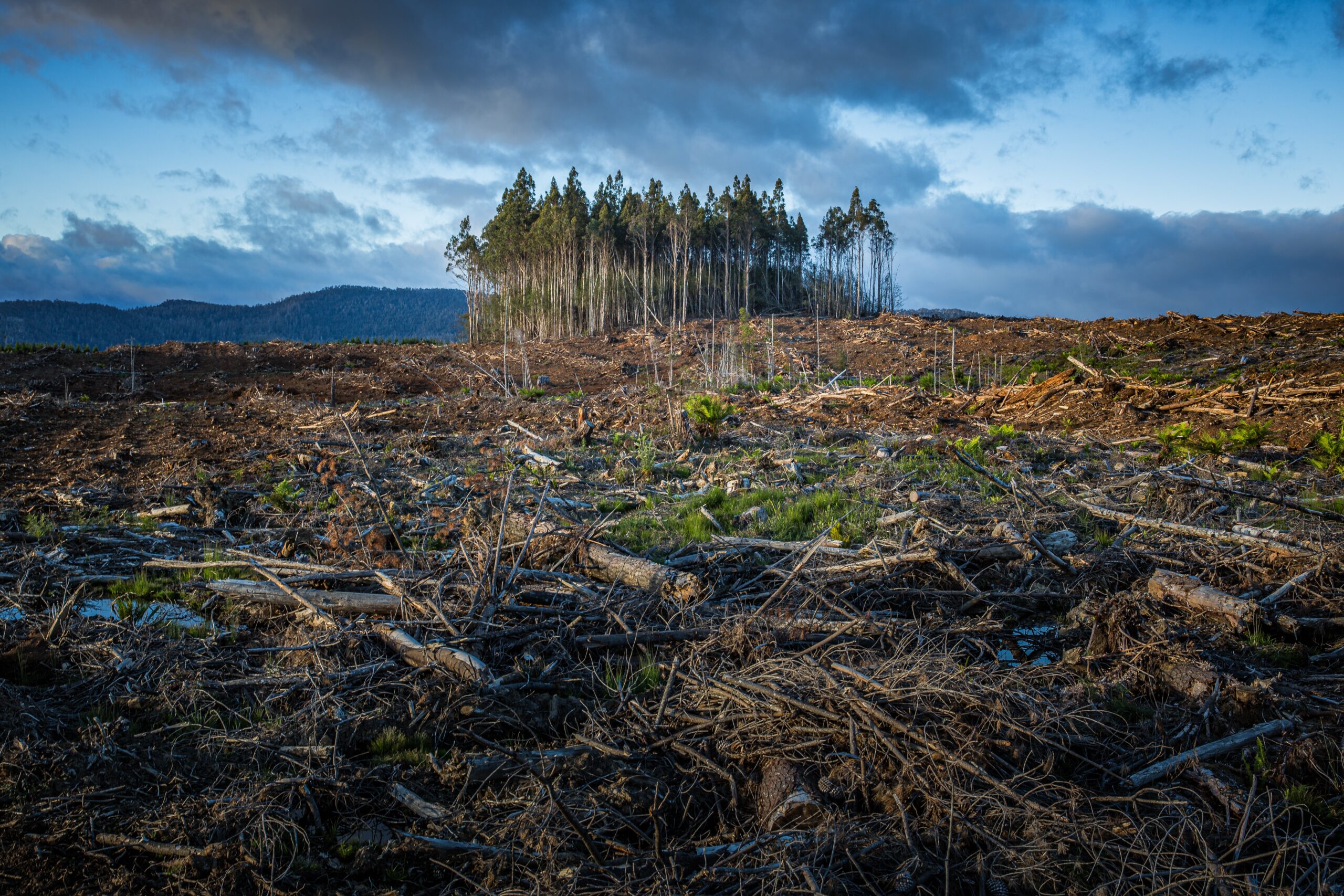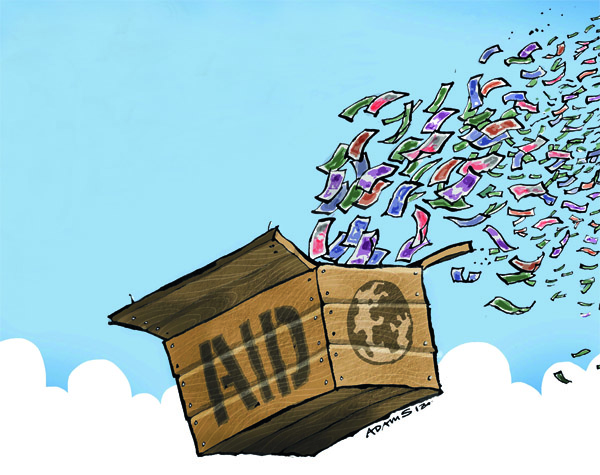Climate Holdup: Economic Roadblocks to LEDCs’ Climate Adaptation

Benjamin Cheong
26 April 2023
Introduction
Climate change is characterized by “long-term shifts in temperatures and weather patterns” that can lead to “intense droughts, water scarcity, severe fires, rising sea levels, [and] flooding”, disproportionately hurting less economically developed countries or LEDCs (“What Is Climate Change?”). With “3 billion to 3.6 billion people liv[ing] in contexts that are highly vulnerable to climate change”, recent climate change acceleration has “exposed millions of people to acute food insecurity and reduced water security, with the largest impacts observed in [LEDCs]” (“Goal 13”; Sixth Assessment Report).
This theme of adapting to changing environments is paralleled in the stimulus packet. In the article “Urban Evolution: How Species Adapt to Survive in Cities,” Eric Bender mentions that when faced with a changing environment from rural to urban, many plants and animals undergo “urban evolution: genetic changes that may help living things adapt to life in big city environments”. Likewise, in the video “How to Build a Resilient Future Using Ancient Wisdom,” Julia Watson mentions how while “high-tech solutions are definitely going to help us solve some of these [climate change] problems”, low-cost nature-based solutions are crucial to combat climate change, a changing environment.
While adaptation to climate change usually takes the form of “planting more heat-resistant crops or investing in green infrastructure”, LEDC “adaptation actions could be outstripped by accelerating climate impacts” (Pugacheva; Adaptation Gap Report). This begs the question: do economic factors hinder the ability of LEDCs to adapt to climate change, namely through industries and infrastructure? Through analyzing various perspectives, this paper will argue that the economic factors of industries and infrastructure do play a significant role in hindering the ability of LEDCs to adapt to climate change effects.
Commodity-Based Industries
The ability of LEDCs to adapt to climate change effects is intricately tied to the industries its economy depends upon as “95 of the world’s 141 [LEDCs] derive at least half of their foreign exchange earnings from commodity exports” (Brown). Agriculture is one commodity LEDCs are often dependent on. The 2015 United Nations Conference on Trade and Development (UNCTAD) Least Developed Countries Report finds that while “the level and growth of agricultural productivity are critical…to the wellbeing of the population of LEDCs”, climate change has a significant “negative effect on agricultural productivity in most LEDCs” as droughts make “water increasingly expensive [and scarce]” and “unpredictable weather” can damage crops. Since LEDC economies tend to rely on the climate change sensitive agricultural industry, LEDCs require much time and money to restructure their economy as “many [LEDCs] lack the human, institutional, and financial resources for…designing comprehensive export strategies” (Export Diversification). A dependence on commodity-based agricultural industries therefore hinders LEDCs from adapting to climate change.
In addition, the 2019 UNCTAD Commodities & Development Report argues that LEDC’s dependence on livestock, another commodity many LEDCs rely upon, hinders their climate change solution implementation. Currently, “livestock contributes 40% of the global value of agricultural output and supports the livelihoods and food and nutrition security of almost 1.3 billion people”, meaning many LEDCs depend on livestock as a crucial commodity-based industry and to sustain its people (“Moving Towards Sustainability”). The report claims that “climate change is expected to affect livestock through its impact on feed crops and forage, water availability, animal health, reproduction and biodiversity”, suggesting that livestock industries are a source of tension as they are both important to LEDC economies and highly sensitive to accelerating climate change (Commodities & Development Report). Therefore, dependence on commodity-based livestock industries restricts LEDCs from adapting to climate change, suggesting that “economic and export diversification of CDDCs appears to be the best solution to prevent the devastating climate change effects on these undiversified economies” (Commodities & Development Report).
An alternative approach shown in the video “How to Build a Resilient Future Using Ancient Wisdom” by Julia Watson advocates for LEDCs to implement low-cost nature-based solutions that are effective at curbing the effects of global warming on climate change sensitive commodity-based industries. Watson references one example: in Africa, tribes that face high monsoon floods live in stilt houses “surrounded by 12,000 individual fish paddocks, or mangrove acadjas”, “feed[ing] one million people that are living around it”. She emphasizes how these people have adapted their lifestyles to overcome the challenges climate change poses. While flooding is often considered to be destructive, these tribes created from it a commodity-based fishing industry that sustains them. Instead of relying on the current high-cost “international initiatives” as proposed in the UNEP 2022 Adaptation Gap Report, Watson suggests that low-cost nature-based solutions could be an effective way for LEDCs to adapt to climate change, implying that commodity-based industries are not a primary economic factor behind the delay of LEDC implementation of climate change solutions.
However, Nathalie Seddon, Professor of Biodiversity at the University of Oxford, points to the economics behind the fact that “less than 1% [of climate change aid] goes to … NbS [nature-based solutions]”. Seddon explains that one reason why nature-based solutions have not been employed is that “the short-term nature of public and private sector decision-making hinders the longer-term planning and maintenance required for the emergence and sustained provisioning of NbS benefits”. Nature-based solutions rely on natural cycles, requiring years to show effects. Mangrove acadjas take time to grow to a suitable size to stop floods from damaging fishing ponds. Although nature-based solutions “effectively reduce climate risks and remove carbon from the atmosphere”, “accelerating climate change is also heavily affecting their ability to provide these climate services” (Adaptation Gap Report). Low-cost nature-based solutions are therefore seen as infeasible in LEDCs because these solutions that require decades to be effective will be quickly outpaced by accelerating climate change.
The 2015 UNCTAD Least Developed Countries Report and the 2019 UNCTAD Commodities & Development Report find that the climate change solutions of LEDCs are hindered because of their overwhelming dependence on the climate-change sensitive crop and livestock commodity-based industries, lacking economic diversification. Although Watson argues that climate change solutions in LEDCs should not be delayed by a lack of money because of the effectiveness of low-cost nature-based solutions, Seddon finds that companies and governments lack incentive to implement them because they take decades to bear fruit and will be sooner outpaced by climate change effects.
Infrastructure
Infrastructure plays a significant role in determining the ability of LEDCs to adapt to climate change. The lack of LEDC funds means they often cannot “spend billions of dollars to upgrade [its] infrastructure to better withstand flooding” (Short). The International Monetary Fund 2017 World Economic Outlook finds the fact that LEDCs usually have limited economic policies hinders their ability to implement climate change solutions quickly. While “sound domestic policies and institutions, and development in general, could play a role in partially reducing the adverse effects of weather shocks”, building climate change infrastructure in LEDCs “can be hampered by rigid economic environments and suboptimal policies, for example, limited access to financial markets, bureaucratic impediments (such as difficulties in obtaining building permits), and legal uncertainties” (“Chapter 3”). Without strong economic policies that encourage the building of climate change infrastructure, LEDCs face greater challenges in implementing infrastructure solutions, hindering their adaptation to climate change.
Furthermore, Paul Chinowsky, an Architecture Professor at the University of Colorado Boulder, claims that the lack of road maintenance in LEDCs makes the wide implementation of climate change solutions infeasible. While roads are important because they open up “access to rural areas”, a combination of the “lack of existing infrastructure” and the lack of maintenance of deteriorating roads are creating challenges for “the existing efforts in sustainable development being undertaken by developing nations” (Chinowsky). The lack of funds in LEDCs means many LEDCs do not have a well-developed transport system, hampering the ease of travel. This challenge in reaching rural areas hinders the effective implementation and maintenance of climate change solutions, again restricting LEDC adaptation to climate change.
However, Samuel Fankhauser, a Professor of Climate Economics at Oxford University, applies the economic growth Solow-Swan model to justify why LEDCs should be able to develop their climate change infrastructure solutions faster. The Solow-Swan model claims that “poor economies…will be able to grow relatively faster than developed countries and eventually catch up…through… technological adoptions from the developed world” (Arias). Fankhauser argues that by using a strategy “inspired by the growth theory of Ramsey and Solow” for climate change infrastructure, LEDCs should be able to adopt advanced climate change solutions from more developed countries, skipping over decades of high-cost research. Since advanced infrastructure technology is available for LEDCs to use, infrastructure is therefore not a primary factor that explains why LEDCs have not implemented many climate change effect solutions.
However, the United Nations Environment Programme (UNEP) 2022 Adaptation Gap Report found that although LEDCs can easily receive the plans for advanced climate change infrastructure solutions from more developed countries, LEDCs usually do not adopt these advanced infrastructure solutions because they usually cost more money than LEDCs have the budget for. While “rich countries have higher adaptation finance needs in absolute US$ values”, “the adaptation finance needs in poor countries are much larger relative to their GDP” for the implementation of “built infrastructure” for climate change solutions (Adaptation Gap Report). Since the money required for climate change infrastructure solutions accounts for a higher percentage of the GDP of LEDCs than richer countries, LEDCs would have to take away money from more parts of their budget to pay for the same solutions. Therefore, the smaller budget LEDCs have to allocate to climate change infrastructure solutions hinders their ability to adapt their economy to climate change.
The 2017 World Economic Outlook suggests rigid economic policies discourage the implementation of climate change solutions, while Chinowsky asserts a lack of existing transportation infrastructure hinders both the implementation and maintenance of these climate change solutions. Although Fankhauser claims that LEDCs should be able to implement effective climate change solutions by adopting the same technology used by more developed countries, the UN Environment Programme 2022 Adaptation Gap Report finds that LEDCs are unable to afford the funds necessary to build the same infrastructure as they account for a higher percentage of the country’s GDP.
Conclusion
After examining various economic perspectives, it can be concluded that economic factors, namely the state of commodity-based industries and infrastructure, hinder LEDCs from adapting to climate change. Regarding industries, climate change solutions are hindered in LEDCs because of their dependence on the agricultural and livestock commodity industries and the time infeasibility of low-cost nature-based solutions. Regarding infrastructure, the efforts of LEDCs to implement climate change solutions are hampered by economic policies that disincentivize the building of climate-change adaptive infrastructure, a lack of existing transportation infrastructure, and a smaller budget.
This conclusion implies that LEDCs can focus on mitigating the effect of these economic factors before implementing climate change solutions, encouraging them to take steps to improve transportation infrastructure, use economic policies to encourage infrastructure investment, and diversify their economy if commodity-dependent. By first addressing these economic factors, LEDCS may be more successful in its future implementation of climate change solutions. Another implication is that since LEDCs are disadvantaged by a lack of funds, outside international organizations may consider allocating financial aid to facilitate better implementation of climate change solutions by LEDCs.
However, this conclusion has several limitations. First, the conclusion was based upon the general trends of LEDC, despite LEDCs having varying characteristics: some are commodity-dependent and others are coastal nations that require greater help fighting sea level rise. Since the solutions listed are not one-size-fits-all, LEDCs have to decide for themselves which economic factors they believe will cause the greatest hindrance to guide the focus of their mitigation efforts. Another limitation is that most of the changes that can be spearheaded by the LEDCs themselves require significant time commitments, which LEDCs often are not capable of making. The acceleration of climate change means LEDCs may continue prioritizing climate change solutions that reap short-term benefits over those that are more helpful in the long run. Despite these limitations, the benefits of encouraging more LEDCs to first mitigate the effect of economic factors on their implementation of climate change solutions cannot be ignored as it is a step that LEDCs may need to make to aid their subsequent implementation of these solutions.
Works Cited
Adaptation Gap Report. United Nations Environment Programme (UNEP), 1 Nov. 2022, https://doi.org/10.18356/9789210023764.
Arias, Maria A., and Yi Wen. “Trapped: Few Developing Countries Can Climb the Economic Ladder or Stay There.” Federal Reserve Bank of St. Louis, 6
Oct. 2015, www.stlouisfed.org/publications/regional-economist/october-2015/trapped-few-developing-countries-can-climb-the-economic-
ladder-or-stay-there.
Bender, Eric. “Urban Evolution: How Species Adapt to Survive in Cities.” Scientific American, 25 Mar. 2022, www.scientificamerican.com/article/urban-
evolution-how-species-adapt-to-survive-in-cities/.
Brown, Oli. “From Feast to Famine.” International Institute for Sustainable Development, Dec. 2008,
www.iisd.org/system/files/publications/com_feast_famine.pdf.
“Chapter 3: The Effects of Weather Shocks on Economic Activity: How Can Low-Income Countries Cope?” World Economic Outlook 2017, International
Monetary Fund, 10 Oct. 2017.
Chinowsky, Paul, et al. “Climate Change: Comparative Impact on Developing and Developed Countries.” Engineering Project Organization Journal, vol.
1, no. 1, Mar. 2011, pp. 67–80, https://doi.org/10.1080/21573727.2010.549608.
Commodities & Development Report. United Nations Conference on Trade and Development (UNCTAD), Sep. 2019,
http://dx.doi.org/10.18356/94028372-en.
Export Diversification in Low-Income Countries. Organization for Economic Co-Operation and Development (OECD), 1 June 2003,
http://dx.doi.org/10.1787/043266813306.
Fankhauser, Samuel, and Nicholas Stern. “Climate Change, Development, Poverty and Economics.” Grantham Research Institute on Climate Change
and the Environment, May 2016, https://doi.org/10.1163/9789004322714_cclc_2016-0148-010.
“Goal 13: Take Urgent Action to Combat Climate Change and Its Impacts.” United Nations, 7 Jan. 2015,
ww.un.org/sustainabledevelopment/climate-change/.
Least Developed Countries Report. United Nations Conference on Trade and Development (UNCTAD), Dec. 2015,
http://dx.doi.org/10.18356/8b32c89b-en.
“Moving Towards Sustainability: The Livestock Sector and the World Bank.” The World Bank, 22 Feb. 2022,
www.worldbank.org/en/topic/agriculture/brief/moving-towards-sustainability-the-livestock-sector-and-the-world-bank.
Pugacheva, Evgenia, and Mico Mrkaic. “Adapting to Climate Change—Three Success Stories.” International Monetary Fund, 20 Mar. 2018,
www.imf.org/en/Blogs/Articles/2018/03/20/adapting-to-climate-change-three-success-stories.
Seddon, Nathalie, et al. “Understanding the Value and Limits of Nature-Based Solutions to Climate Change and Other Global Challenges.”
Philosophical Transactions of the Royal Society B: Biological Sciences, vol. 375, no. 1794, Jan. 2020, p. 20190120,
https://doi.org/10.1098/rstb.2019.0120.
Short, John Rennie. “How Cities Are Adapting to Climate Change.” World Economic Forum, 31 July 2015,
www.weforum.org/agenda/2015/07/how-cities-are-adapting-to-climate-change/.
Sixth Assessment Report. Intergovernmental Panel on Climate Change (IPCC), 19 Mar. 2023,
report.ipcc.ch/ar6syr/pdf/IPCC_AR6_SYR_LongerReport.pdf.
Watson, Julia. “How to Build a Resilient Future Using Ancient Wisdom.” TED, Video, 11 Aug. 2020,
www.ted.com/talks/julia_watson_how_to_build_a_resilient_future_using_ancient_wisdom.
“What Is Climate Change?” United Nations, www.un.org/en/climatechange/what-is-climate-change.






Leave a Reply
You must be logged in to post a comment.